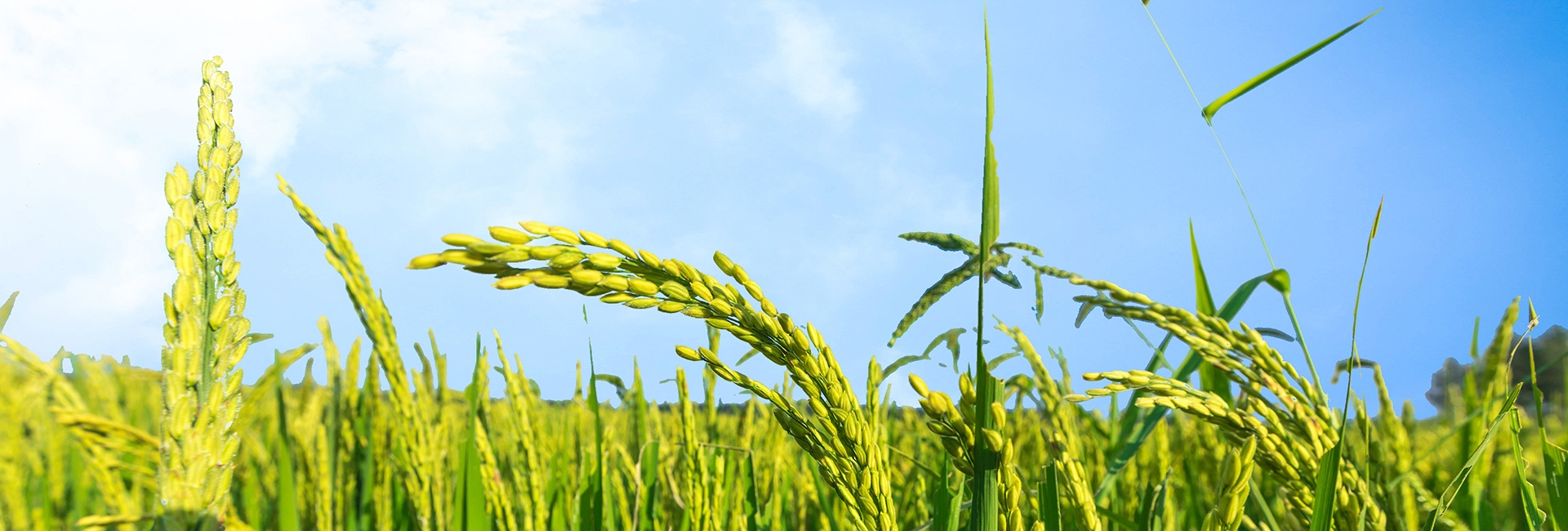-
 刘总
刘总
-
 邢经理
邢经理
- back to top
To correct the name of pesticides: it is suggested to modify and perfect..
In the competition between humans and pests for food, the importance of pesticides is self-evident. In the early stage of pesticide development, on the one hand, due to insufficient research on it, some organochlorine, organophosphorus, organic arsenic and organic mercury pesticides also had a huge impact on non-target organisms. On the other hand, the early pesticides were mainly used to control pests, especially the highly toxic organophosphate insecticides, so some of the terms with the word "poison", and has been used to inherit. For example, the United States first called pesticides "economic poisons." Of evaluation activity of pesticide toxicity (toxicity), joint toxicity (combined toxicity), biological activity (in activity), pesticide toxicity (toxicity of pesticide) and toxicology (toxicology), and other specialized terms, combined with the field of pesticide in China's pesticide industry predecessors current situation of the development of translation and to import from abroad, and to the development of China's pesticide research has brought great progress.
Nowadays, pesticides are no longer the "poison" in the previous impression, and the use of highly toxic or highly toxic pesticides has been eliminated or restricted, and the dosage has been reduced to a very low level. Currently, only 6.10% of all active drugs and preparations licensed for sale in China are highly toxic or above, and only 2% of them are used in agricultural production, and their sale and use are subject to strict restrictions. Pesticide Science, a foreign journal, was renamed Pest Management Science at the end of 1999. It can also be seen from the naming that modern pesticides emphasize more on the prevention, control and regulation of pests and pests and are no longer just eliminating them. So, some nouns without specification use, for the public or the entry-level professionals to produce ambiguity and error, the word such as virulence, no matter how professional explanation, public understanding is toxic, and even some professionals (professionals) is mainly refers to most of the pesticide also think pesticide is poison, is generally believed that means high toxic organophosphorus insecticides, actually otherwise), so some inappropriate pesticide term correction is needed.
1) toxicity (icability)
(19) At the end of the 19th century, the use of "icine" has been used to describe damage to plants and animals to snake venom, animal blood, and inorganic salt ions. In the field of pesticides, Trillat is equal to the first use of the term "icin" in 1909, and the popularity of quinoline vapor can be applied to kill mosquitoes in a short time, without any adverse effects on small animals, such as mice and rats. In 1913, Demolon discussed the composition, virulence and biochemistry of nitrogen compounds from the point of view of agriculture. Subsequently, studies on the toxicity of hydrocyanic acid, benzene derivatives, arsenic and kerosene to insects were reported.
The earliest records of "toxicity", "insecticidal efficacy" and "toxicity" of pesticide in China are very fuzzy. In March 1950, Ren Mingtao first used the term "virulence" to describe the insecticidal toxicity of different concentrations of extracts from Rattan to mungbean aphids. In May of the same year, Hu Bingfang described the toxicity, insecticidal efficacy and virulence, respectively. The toxicity refers to non-target organisms such as humans or other animals, while the insecticidal efficacy and virulence refer to the toxic effect of organophosphate insecticides on insects. In the Encyclopedia of Chinese Agriculture, Pesticide Volume, published in 1993, virulence was defined as one of the indicators to measure the toxic effect of a drug on harmful organisms, indicating the intrinsic lethal ability of a drug on harmful organisms. In another 2005 edition of The Encyclopaedia of China, virulence is defined as the nature and degree of the direct effect of the active ingredient of a pharmaceutical agent on a harmful organism, and generally refers to the results determined under indoor conditions. The national standard issued in 2015 stipulates that virulence is defined as the biological activity of insecticides against vectors. Pesticide toxicity mainly reflect itself the effect of single factor, and the determination of drug toxicity and efficacy trials, in indoor must control conditions (such as temperature, humidity, illumination, etc.), the precise instrument and standardize the operation of the technology, the use of standardized training and keeping the sample groups were determined, and its virulence value size is typically used to death in the quantity (LD50), in the lethal concentration (LC50), effective medium (ED50), in effective concentration (EC50) and down quantity (KD50) and so on.
It can be determined from the above literatures and definitions that virulence only represents the effectiveness of target organisms, and its birth was accompanied by the widespread use of highly toxic pesticides such as organophosphates. Subsequently, bactericidal virulence, herbicidal virulence, gastric virulence, antiseptic virulence and the terms of the regression equation of virulence were derived. But whether virulence and its derived terms continue to be used in modern agriculture is debatable.
Early insecticides mainly act on acetylcholinesterase organophosphates, poor selectivity, high toxicity to higher animals, so the use of "virulence". However, with the constant replacement of pesticide varieties, the target and mechanism of action become more precise and clear, and the selectivity is also higher. For example, neonicotinoids are highly active in insects but less toxic to mammals, taking advantage of differences in acetylcholine receptors between mammals and insects; Highly effective bisamide insecticides that act on fish nitin receptors also use the difference between insect and mammalian receptors. Another example is pyrethroid insecticides, which act on voltage-sensitive sodium channel targets that are more sensitive to insects and are particularly less toxic to mammals and fish. Some insecticides act on specific receptors specific to insects but not to humans, such as benzoyl urea insecticides that inhibit chitin synthesis. Insecticides of diacylhydrazide, a molting hormone analogue that disrupts insect development; Bacillus thuringiensis (B.t.), which ACTS on the midgut cells of insects, is highly toxic to humans or even nontoxic. As for herbicides and fungicides, the targets of action are more different from the human body. It can be said that the role of modern pesticides has been far from the meaning of "virulence". Therefore, the continued use of words such as virulence is obviously inconsistent with the development of green pesticides, and is not conducive to the correct understanding of pesticides by the public. As a matter of fact, the term "biological activity" is now used to describe the effects of pesticides on target organisms, such as insecticidal (mite) activity, bactericidal activity, herbicidal activity, etc. As for the derived terms, it is also recommended to replace toxicity with gastrotoxic effect, touching effect and fumigation effect, etc.
(2) Combined toxicity and co-toxicity coefficient
Mixed pesticide is one of the characteristics of China's pesticide industry. Most of China's small and medium-sized pesticide enterprises mainly produce mixed preparations, and the registered number of mixed agents accounts for 1/3 of the total sales volume. Due to the extensive research on mixed agents, joint toxicity and co-toxicity coefficient are often used in literature and textbooks. Combined toxicity refers to the toxicity of two or more agents to harmful organisms when used in combination, including synergistic effect, additive effect and antagonistic effect. Co-toxicity coefficient was first proposed and applied by Mr. Sun Yunpei in 1960. It was used to evaluate the coefficient of toxicity variation. There was a fixed calculation formula, and the coefficient was supplemented and modified later.
In fact, there is no problem with the meaning of these two nouns. The main reason is that the virulence is no longer in line with the development of modern green pesticides. It is suggested that joint action (potency) and joint action coefficient may be more appropriate to replace them.
(3) Toxicity of pesticide (PESTICIDE of pesticide)
The toxicity of a pesticide is the ability of the pesticide to damage the organism, but in agriculture, it is more commonly referred to as the harm to non-target organisms, which is a side effect of the pesticide. For example, pesticides enter living organisms (such as bees, earthworms, fish, or humans) by oral administration, skin contact, or respiratory tract, and can adversely affect the normal activities of physiological functions or organs, leading to poisoning in humans or animals.
It has been pointed out in relevant textbooks and literatures that there is no necessary relationship between toxicity and virulence, and the target objects are even different. Toxicity can not be inferred from the toxicity level, nor can toxicity be measured by the magnitude of toxicity, good pesticide varieties should be high toxicity, high efficacy and low toxicity, namely the so-called "high efficiency, low toxicity" of green pesticides. However, from the point of view of the public, such a narrative does produce ambiguity, and high toxicity may be considered toxic and harmful. But if you change it to "toxicity is not necessarily associated with activity, the target is even different. Toxicity can not be used to predict the activity, nor can the activity level to measure the toxicity, a good pesticide should be good activity, high efficacy and low toxicity, that is, the so-called "high efficiency, low toxicity" of green pesticides. This will be more conducive to the public's correct understanding of pesticides.
In addition, some of the names of pesticides are also inappropriate and make people understand. For example, 30% microcapsule suspension commonly used by the pesticide chlorpyrifos (Chlorpyrifos NO. PD20183505) is actually a low-toxicity pesticide, 0.5% granule (CHLORpyrifos No. PD20183475) is even more microtoxic. Propachlor (registration No. : PD20140326) is also low toxicity; The antiviral drug fluorophosphorus (registration number: PD20160339) belongs to low toxicity, and the original meaning of the word "virus" in its name refers to the virus. However, because these names contain poisonous characters, they will leave the impression of "poisonous" and make the public stay away from them. Therefore, the naming of pesticides also needs to be more reasonable and perfect.
· Biological activity and effectiveness of pesticide
Biological activity is derived from medicine, which is defined as endogenous or exogenous property that can cause various biological effects after interacting with the body. In the field of pesticides, it generally refers to the effect of agents in the laboratory on target organisms, which reflects the activity of agents on pests, bacteria, grasses and other harmful organisms. The function of pesticides is to prevent and control diseases, pests and weeds, so its effect on the target is positive, so it is called activity; The possible adverse effects on the surrounding environment and non-target organisms are called toxicity.
Pharmacodynamics refers to the comprehensive effect of pesticides on harmful organisms under various environmental factors, which not only depends on the nature of pesticides, but also includes the multi-factor comprehensive effect of other conditions. Different dosage forms, different application techniques, different host plants, different target organisms (or control objects) and various field environmental conditions are all closely related to the effects of the agents. Therefore, it is suggested that "efficacy and toxicity are two different concepts, but the results are usually the same, that is, those with high toxicity have high efficacy" described in relevant textbooks should be revised to "efficacy and activity are two different concepts, but the results are usually the same, that is, those with high activity have good efficacy", which may be more appropriate.
5 Toxicology
Toxicology is the study of the mechanism of toxicological action on biological organisms, including the penetration and distribution of agents, biotransformation and metabolism, the role of target sites, selectivity and resistance, etc. In the category of pesticides, it refers to studies on the mechanism of action and metabolism of pesticide molecules on target pests, and it can also be studies on the harm of pesticide molecules on non-target organisms. Toxicological studies can determine the mechanism of action of pesticides at the molecular level, guide the molecular design of compounds, and quickly help to obtain pesticides with better selectivity and higher safety.
6 conclusion
To sum up, virulence is the magnitude of the toxic effect of highly toxic insecticides on harmful organisms at the early stage of pesticide development in China. With the changes of The Times and the development of pesticides, the targets of pesticides are becoming more and more clear, with higher selectivity and less toxicity. Therefore, it is questionable whether virulence, bactericidal virulence, herbicidal virulence, regression equation of virulence, combined virulence and co-virulence coefficient are still in use. And such as activity, pharmacodynamics and toxicity and other terms, also should clearly understand its definition and connotation, reasonable use.
Every professional term connotation and scope of application are related to its specific age, the public have too much misunderstanding and prejudice to pesticide, only advancing with The Times, improve and revise relevant inappropriate terms used pesticides, and reasonable use, to avoid ambiguity and misleading, and can promote the discipline of benign development and communication, more can promote green pesticides play a bigger role, to ensure agricultural sustainable development.

Hubei Zhongxun Thinkgreen Technology Co., Ltd.
Address:28 Jinghe Road, Circular Chemical Industry Park, Jingmen City, Hubei Province, China
Tel: +86 752-2775550 +86 13872909058
Email: xindoudou@zhxcn.com
all rights reserved: Hubei Zhongxun Thinkgreen Technology Co., Ltd. ICP:鄂ICP备18012976号-1 Technical support:xiao hu


COMPANY PROFILE
Guangdong Zhongxun Agricultural Science Co., Ltd. was established in 2002.It is a national high-tech enterprise focusing on the research and development, production, sales promotion and technical service of pesticide raw materials, intermediates, preparations, pharmaceutical fertilizer products. "Zhongxun", "Kelilong", "Hite" and many other well-known national brands; the company has set up production bases in Guangdong, Hunan, Sichuan, Jiangxi, Hubei and other places; through years of development, from the company size, product number, Product varieties, solutions, and industrialization of R & D technologies have become the industry's leading companies; the company's product sales ranking for many years in the top of the national pesticide preparation industry...
2000+
Number of employees
400+
Research evelopment
5000+
Cooperative partner












